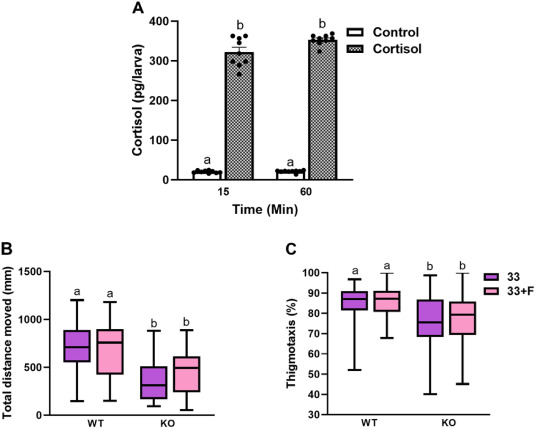Fig. 4 Cortisol treatment did not rescue the behavioral response to the thermal stressor in the crhr1−/− larvae: (A) Whole body cortisol levels among the WT fish following cortisol exposure for 15 and 60 min. Bars represent mean + SEM (n = 9, pool of 12 larvae per n); bars with different letters are significantly different (nonparametric Two -way ANOVA, no main effect but significant interaction, P = 0.024). The box plots shows the total distance moved in light (B, significant interaction but no main effect, P = 0.00022) and percent thigmotaxis (C, significant interaction but no main effect, P = 0.0002) exhibited by the wildtype (WT) and crhr1−/− larvae (KO) at 33 °C either without (33) or with cortisol (33+F) at 60 min. Cortisol (F) did not rescue the hypoactivity and the lower % thigmotaxis seen in the fish lacking Crhr1 at 60 min (See Fig. 2, Fig. 3 for more details). Boxes represent 1 SD above and below the mean of the data (n = 48–63, 2–3 trials with 24 larvae each), the line inside the box shows the median of the data, and the whiskers indicate the minimum and maximum of all the data; boxes with different letters are significantly different (nonparametric Two-way ANOVA).
Reprinted from Molecular and Cellular Endocrinology, , Rajeswari, J.J., Gilbert, G.N.Y., Khalid, E., Vijayan, M.M., Brain monoamine changes modulate the corticotropin-releasing hormone receptor 1-mediated behavioural response to acute thermal stress in zebrafish larvae, 112494112494, Copyright (2025) with permission from Elsevier. Full text @ Mol. Cell. Endocrinol.

